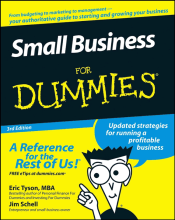Research and Program Evaluation - Review Questions
9 important questions on Research and Program Evaluation - Review Questions
A Type I error occurs when
a.you have a beta error.
b.you accept null when it is false.
c.you reject null when it is true.
d.you fail to use a test of significance.
Okay here it is: Time to plug in your handy dandy memory formula—”RA” or “reject when applicable/true.” Since all statistical tests rely on probability there is always the chance that the results were merely chance occurrences. Researchers call these chance factors “errors.”
If a researcher changes the significance level from .05 to.001, then
a.alpha and beta errors will increase.
b.alpha errors increase but beta errors decrease.
c.alpha errors decrease; however, beta errors increase.
d.This will have no impact on Type I and Type II errors.
Review question 723. Let me mention as an aside that research can evoke fear, hostility, and anxiety in counselors. Why? Well, many counselors view research as cold, sterile, impersonal, and not related to the actual counseling process. There is also the fear of negative results related to the way one practices his or her craft.
The researcher in question 727 now attempts a more complex experiment. One group receives no assertiveness training, a second group receives four assertiveness training sessions, and a third receives six sessions. The statistic of choice would
a.be the mean.
b.be the t test.
c.be the two-way ANOVA
d.be the ANOVA
This is a tough question. A one-way analysis of variance is used for testing one independent variable, while a two-way analysis of variance is used to test two independent variables. When a study has more than one DV the term multivariate analysis of variance (MANOVA) is utilized. The answer is choice “d” since the simple ANOVA or one-way analysis of variance is used when there is more than one level of a single IV, which in this case is the assertiveness training.
- Higher grades + faster learning
- Never study anything twice
- 100% sure, 100% understanding
Regardless of the shape, the _______ will always be the high point when a distribution is displayed graphically.
a.df.
b.mean.
c.median.
d.mode.
The mode will be highest because it is the point where the most frequently occurring score falls.
When a horizontal line is drawn under a frequency distribution it is known as
a.mesokurtic.
b.the y axis.
c.the ordinate.
d.the x axis.
Choice “a” is from the Latin root “meso” or middle, and kurtic refers to the peakedness of a curve. The normal Gaussian curve is said to be mesokurtic since the peak is in the middle. When graphically representing data, the “x axis” (also called the abscissa) is used to plot the independent variable. The x axis is the horizontal axis. The “y axis” (also called the ordinate) is the vertical axis which is used as a scale for the dependent variable.
The x axis is used to plot the IV scores. The x axis is also known as
a.the y axis.
b.the abscissa.
c.the DV.
d.the vertical axis.
Again, it is the horizontal axis which plots the IV—the factor manipulated via the experimenter.
The y axis is used to plot the frequency of the DVs. The y axis is also known as the
a.ordinate.
b.abscissa.
c.the IV.
d.the horizontal axis.
The ordinate plots the DV or experimental data. A simple memory device might be that the y axis is vertical like the letter “y.”
If a distribution is bimodal, then there is a good chance that
a.the curve will be normal.
b.the curve will be shaped like a symmetrical bell.
c.the researcher is working with two distinct populations.
d.the research is useless in the field of counseling.
Imagine if you will that you are plotting the average weights of adult men and women. In all probability, two distinct points of concentration would be evident on the curve (see chapter 13, “Graphical Representations”).
A T-score is different from a z-score. A z-score is the same as the standard deviation. A T-score, however, has a mean of 50 with every 10 points landing at a standard deviation above or below the mean. Thus a T-score of 60 would equal +1 SD while a T-score of 40 would
a.be –2 SD.
b.be –1 SD.
c.be a z-score of +2.
d.be a z-score of +1.
Note that the T-score isn’t as mathematically threatening since it is never expressed as a negative number. Choice “a” would be a T-score of 30, choice “c” a T-score of 70, and choice “d” a T-score of 60. Here again, a look at the normal curve displayed in the Graphical Representations section of the text should be helpful.
The question on the page originate from the summary of the following study material:
- A unique study and practice tool
- Never study anything twice again
- Get the grades you hope for
- 100% sure, 100% understanding































